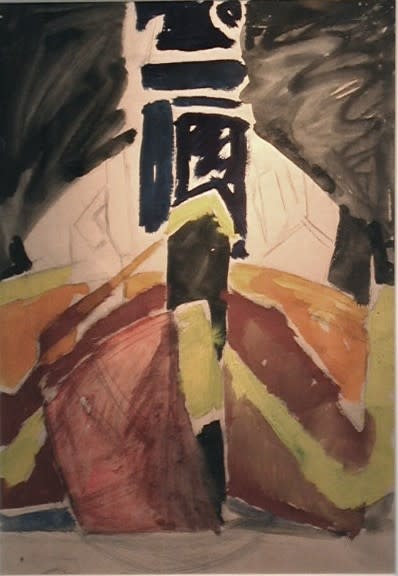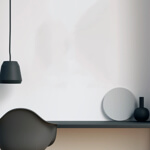David Bomberg 1890-1957
The Barge, 1920
Watercolour and pencil on paper
47 x 35 cms
18 8/16 x 13 12/16 ins
18 8/16 x 13 12/16 ins
1337
Sold
David Bomberg revisited the theme of barges a number of times in 1919. His interest in this subject was rooted in his war experience in the Flanders where he delivered...
David Bomberg revisited the theme of barges a number of times in 1919. His interest in this subject was rooted in his war experience in the Flanders where he delivered messages by barge. However according to Richard Cork, this nascent fascination was consolidated by a random incidence which occurred one summer afternoon in 1919 when he and his first wife Alice went cycling in north London. Alice recallled:literally fell off his bike; and while I dismounted quickly I grabbed his bike and took the two bicycles on to the kerb to get them away from other riders. Meanwhile I saw that he was hunting in his pockets and I knew he was getting pencil and paper and then I saw what he had seen as we mounted the bridge - four or five barges in line - tied up for the night, with willow trees throwing shadows from the other bank. I suppose we stood there for nearly one hour while he made his sketch and then we rode home, and he spent some time brooding over the drawing he had made on the back of an old envelope!'
(Alice Bomberg quoted in Richard Cork, David Bomberg, Yale University Press, New Haven and London, 1987, p. 134)The following remark by the Observer on Bomberg's contribution to the 1919 London Group show could equally apply to this drawing of The Barge, whereby he 'retained from his erstwhile Cubism a sense of solid form which gives intense significance and character both to his treatment of the human figure and to his splendidly-designed 'Barges''.
(Richard Cork, David Bomberg, Yale University Press, New Haven and London, 1987, p. 133)
(Alice Bomberg quoted in Richard Cork, David Bomberg, Yale University Press, New Haven and London, 1987, p. 134)The following remark by the Observer on Bomberg's contribution to the 1919 London Group show could equally apply to this drawing of The Barge, whereby he 'retained from his erstwhile Cubism a sense of solid form which gives intense significance and character both to his treatment of the human figure and to his splendidly-designed 'Barges''.
(Richard Cork, David Bomberg, Yale University Press, New Haven and London, 1987, p. 133)




